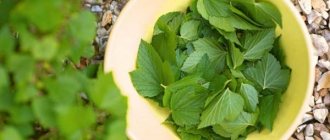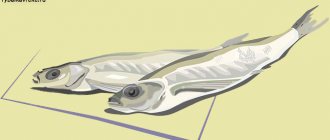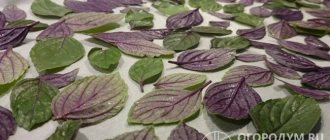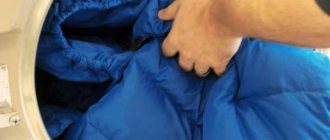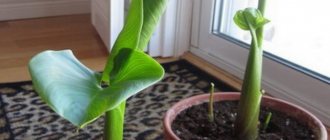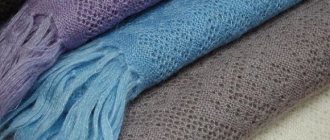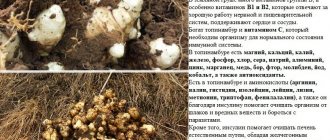The benefits of black currant leaves and berries have been known to almost everyone for a long time. At the same time, many are wondering how best to dry currant leaves for the winter in order to preserve their benefits and aroma as much as possible. In this article we will try to talk about all the rules and nuances of this process.
In folk medicine, the leaf part of the shrub is widely used to treat various diseases.
All parts of the plant contain high concentrations of vitamins, micro- and macroelements necessary for humans. Black currant fruits are tasty and healthy both fresh and in preparations - jellies, jams, compotes, syrups, tinctures. Fresh and dried leaves are used in canning vegetables, for making currant tea, as part of herbal teas with raspberries, mint, etc.
Fruits and leaves contain:
- vitamins – A, B1, B2, B5, B6, B9, C, E, H, PP;
- macroelements – calcium, potassium, magnesium, phosphorus;
- microelements – iodine, boron, fluorine, copper, zinc, cobalt, manganese, iron, molybdenum;
- biologically active substances – anthocyantics, flavonoids, organic acids, essential oils, pectin, etc.
How to properly preserve these valuable components? While berries can be frozen quite successfully, drying has remained the main method of harvesting green mass for a long time.
In the absence of individual intolerance, drinks with the addition of currant leaf have no contraindications
Dried leaves are used as an adjuvant for the prevention and treatment of colds, cardiovascular and other diseases, and to strengthen the immune system.
When to collect and prepare?
Currant leaves can only be collected at certain times.
Depending on the color of the fruit, the harvesting method will also differ. It is also important to take into account the climatic conditions of the region in which the harvesting takes place, as well as the growing conditions of the bush and the harvesting method
It is best to stock up on blackcurrant leaves. On the leaf blades of this berry variety there are special glands filled with essential oils. They give the decoction or tea a characteristic aroma and sour taste.
The greatest benefit is contained in the young shoots of the bush, so they need to be collected from late spring to early summer. In this case, focus not on calendar indicators, but on climatic conditions in your region. Start collecting when the bush has already bloomed.
Experts say the best time for harvesting is morning. At this time, the dew drops had already completely dried on the leaf plates, but the leaf had not yet had time to heat up.
Important! Avoid harvesting in the rain. Raw materials collected in such weather are likely to become moldy or rot, and your work will go down the drain.
The procurement of herbal raw materials is carried out according to the following rules:
- Carefully pluck each leaf, cut it with pruning shears, and do not tear it off with your fingers. Avoid blackened or warped material.
- Do not completely expose the branches. Leave some leaves on each of them.
- Immediately check the leaf blades for larvae, insects, damage, rot and other defects. If there are at least a few damaged leaves on the bush, then this is a reason to provide the crop with emergency medical care.
- Make sure that the trunk of the bush is not damaged during assembly. Any damage can destroy the currants.
Storage
For convenience, the finished dry product can be crushed and stored in a tightly closed glass container to prevent moisture and foreign odors from penetrating into the container.
Fabric bags or paper bags are also suitable for packaging supplies.
When choosing a storage location, the first and main rule is protection from moisture. Your fragrant herbal tea infusion will not tolerate being in the vicinity of sharp-smelling foods or spices.
If you follow the rules described above, dried currant leaves can be stored for up to three years without loss of beneficial properties and aroma. But, of course, it is better to make fresh preparations for the winter every year.
When to collect currant leaves for the winter?
The most useful substances are contained in young leaves, so it is recommended to collect them in late spring - early summer. But experts do not recommend relying on the calendar. They are convinced that it is best to collect during the flowering period of the plant. When the plant blooms depends on the climate zone and the weather conditions of a particular year.
In addition, to the question “When should you collect currant leaves?” they will answer with confidence - “In the morning!” It is advisable that the dew on the leaves has already dried, but they have not yet had time to heat up in the sun. It is strictly not recommended to collect currant leaves in rainy weather. When dried, they may become moldy, and all your work will be in vain.
When preparing currant leaves, you should follow simple rules:
- Try to pluck or carefully cut off even, non-blackened leaves located in the upper part of the plant with pruning shears.
- Do not pick (cut) all the leaves from one branch.
- Check leaves for signs of rot or insect damage. Having discovered these, you will not only be able to get rid of low-quality raw materials, but also provide timely help to your garden pet.
- When collecting, try not to damage the plant trunk. This can lead to diseases of the bush and even its death.
You may be interested in: Motherwort tea for good sleep and strengthening the nervous system
Types of healing compounds
Depending on the disease and method of use, currant leaves are added when preparing various medicinal products: infusion, tincture, decoction, tea, oil.
Infusion
The infusion is used to treat many ailments. It is not difficult to prepare it according to the classic recipe. To do this, you will need 6 tablespoons of crushed dry currant leaves and 1 liter of boiling water. Pour the mixture with water, cover with a lid, wrap in a warm cloth and leave for 2-3 hours. Be sure to strain before use. Take orally in the dosage necessary to treat a particular disease.
Tincture
Unlike an infusion, in order to prepare an aromatic and healing tincture, you need to purchase alcohol or vodka. You can also use homemade moonshine, but the infusion time will be much longer. It is recommended to cook in a dark-colored container. Wash the currant leaves and put them in a jar, fill them with alcohol-containing liquid. Leave for at least 21 days. There are several standard recipes for currant tincture, depending on the type of alcohol used.
Vodka tincture recipe
For preparation you will need the following ingredients:
- fresh currant leaves in such quantity as to fill a three-liter jar by a third;
- 1 tablespoon sugar;
- 1 teaspoon chopped lemon zest;
- 2–3 pcs. dried cloves;
- 1 liter of vodka.
Preparation: mix all ingredients and pour vodka. Close the jar tightly. Leave for 10 days in a dark place. After the specified period, strain. Store in the refrigerator in a closed container.
Take 50 ml orally at the first symptoms of a cold.
Alcohol tincture recipe
Preparing currant tincture using alcohol is very similar to classical methods for making other herbal similar products. The difference is that experts do not recommend using the alcohol elixir in its pure form; it is better to dilute it with water before use.
Required Products:
- 0.5 liters of 96 percent alcohol and water;
- 100 g sugar;
- 500 g of fresh currant leaves.
Preparation:
Wash the leaf part and put it in a jar, add sugar and alcohol. Place in a dark place for 10 days. Strain and add the required amount of water.
Add to hot drinks in small doses (1 teaspoon). It is recommended to use it as a prophylactic during periods of exacerbation of colds and viral diseases.
Moonshine tincture recipe
Almost no different from the previous recipe. But there are several nuances. Experts advise adding 500 g of currant berries to the leaves. This product will acquire a more pronounced aroma, a beautiful inky color, and the taste will be softer. When infusing, shake the product 3-4 times.
Decoction
Due to the chemical composition, currant leaves have exceptional benefits for the human body. A decoction from this plant is considered healing and helps to get rid of many ailments, vitamin deficiency, recover during the postoperative period, increase immunity, cleanse yourself of waste and toxins, and speed up metabolism. In addition, currant remedy is excellent for preventing colds.
The decoction is an excellent antiseptic, so it is often used in the form of lotions and compresses to treat cuts, wounds, abrasions and other skin problems. Ingredients and preparation may vary depending on the disease. But there is a classic recipe. For preparation you will need the following ingredients:
- 6 large currant leaves (can be replaced with 2 tablespoons of dry raw materials);
- one glass of boiling water.
Preparation:
mix both ingredients. Place on moderate heat. Cooking time should not exceed 15 minutes. Then remove the container with the broth from the stove, let it cool naturally, and strain. The remedy is ready.
Important point:
Store the finished product for no more than 2 days in the refrigerator.
Tea
Currant tea can be consumed regularly; it is an excellent replacement for regular tea. But you shouldn’t get carried away with it, the recommended dose is 250–300 ml per day.
It's easy to prepare. You need to take 2-3 fresh currant leaves or 1 tablespoon of dry ones. Pour 300 ml of boiling water. To obtain a pronounced aroma, it is recommended to boil for several minutes. Drink once a day, instead of tea. If desired, you can add honey. Just add it not to hot drinks, but to warm drinks. Otherwise, bee sweetness loses its beneficial properties.
There is another recipe for tea with the addition of currants. It is recommended to be used as an aid in the treatment of colds and viral diseases.
Vitamin tea recipe
For preparation you will need the following ingredients: 2-3 currant leaves, one raspberry and one strawberry leaf each. Pour 500 ml of boiling water over the greens. Cover with a lid and leave to steep for 15–20 minutes. Drink 200 ml several times a day.
Video:
how to make tea from blackcurrant leaves Expand
Oil
Currant oil is considered one of the most valuable and rare. To prepare it, they use the cake that remains from the berries after they are processed into juice. It has a characteristic yellow color, thick consistency and delicate aroma, and is widely used for pharmaceutical, cosmetic and perfume purposes.
The main value of currant oil lies in its composition, which includes:
- Omega-3 (alpha-linolenic fatty acid).
The most important component for the human body, regardless of age. Normalizes blood pressure, improves blood circulation and mental abilities, has a positive effect on the functioning of the gastrointestinal tract and heart muscle, burns fat, and helps in the formation of muscle mass. People who lead a healthy lifestyle and want to lose weight, children simply need to consume foods high in omega-3. - Omega-6 (gamma-linolenic fatty acid).
It is famous for its beneficial properties and plays a huge role in cell division. In addition, it has a significant effect on the normalization of hormonal balance, the general condition of skin and hair, the functioning of the circulatory system and the function of brain activity. - Omega-9 (oleic acid).
The benefit lies in the ability to prevent cholesterol deposits and blockages, and normalize blood sugar levels. Has a powerful antitumor effect. - Stearic acid.
It is actively used in the food industry and in cosmetology, as a thickener.
Currant oil is one of the few that is used both externally and internally. Has the following beneficial properties:
- antibacterial;
- restorative;
- diuretic;
- diaphoretic;
- wound healing;
- choleretic;
- anti-inflammatory;
- soothing;
- blood purifying;
- immunomodulatory;
- antiviral.
It is difficult to prepare currant oil on your own at home, so it is better to purchase this medicinal product in a specialized store or pharmacy chain.
What are the collection regulations?
It’s easier to go to the garden, pick green currant leaves and brew delicious and fragrant tea. But it definitely won’t be of any use. And to obtain a healing drink, raw materials are collected during the flowering period. This is the stage when the vegetation is fully saturated with valuable components.
The time of day also plays an important role. Herbalists recommend collecting medicinal plants in the morning, approximately from 8 to 11 o'clock and in dry weather. This is the period when the dew has dried and the sun is not yet shining. It is not advisable to take raw foliage, since it cannot be dried properly.
Another point taken into account when collecting raw materials is the cycle of the earth’s satellite. It is recommended to select a period when the Moon is waxing.
Whole leaves are torn off, without damage or external signs of disease or insect damage. The tops of young shoots are suitable. Similar rules apply to collecting leaves of other berry crops.
What rules are followed?
Drying is the second important stage in preparing currant greenberries for the winter. Even correctly collected, but not properly dried, they can go bad. The main thing is to comply with a number of conditions:
- warm;
- absence of dampness and direct sun exposure;
- open space in the fresh air.
They choose a place where it is warm, dry and not hot from the sun. Lay out the collection on a spread clean piece of cloth or paper. It is unacceptable to use newspapers, as the paint contains toxic components. Drying on them will not add any benefit to the leaves.
Throughout the process, the workpieces are periodically stirred so that they do not start to mold. As soon as the sheets acquire a brittle structure, they are sent to a permanent storage warehouse.
Place the resulting raw materials in hermetically sealed containers. Place it where it is dry and cool. You should not keep odorous spices or other products nearby that can imbue currant leaves with unnecessary aromas.
If it is not possible to dry the foliage in the fresh air, use the oven. Only with this method are some of the beneficial properties lost. The leaves are distributed in an even layer on a heat-resistant sheet, then placed in an oven heated to 100 °C. The door is left ajar. After 1.5 hours, the heating is reduced and the raw materials are brought to full condition.
In the oven
This method is great if you don't have the time or space to dry the leaves naturally. Preheat the oven to +100 °C and place a baking sheet with the prepared raw materials. After 90 minutes, reduce the temperature to +50 °C and leave it like that for another half hour. After the time has passed, check the degree of readiness of the product, and if it is a little wet, leave it in the oven until done. During the process, be sure to keep the cabinet door ajar 10 cm: this will ensure good air circulation, prevent the leaves from overheating and prevent moisture from being retained. Instead of an oven, you can use an electric dryer. Set it to medium mode and keep it for 3-4 hours. If the currants have not dried during this time, continue the process, checking their readiness every hour.
Read also: Rules for drying currants at home
How to properly dry dill?
How can you remove a stain from jeans?
What other methods of harvesting leaves are there?
An alternative to the previous options for harvesting currant greens is fermentation. The method is complex and labor-intensive, but effective. More often fireweed is subjected to it, but it is also acceptable for other plants. It is acceptable to prepare currant leaves in this way.
Lay out the sheets on a flat surface, in the shade. It is recommended to spread cotton or linen fabric on the bottom. Then the raw materials will not dry out before the due date and will not absorb anything dangerous.
The first fermentation step takes from 12 to 24 hours. The condition of the foliage will become a guideline: when squeezing, you don’t hear a crunch, which means it’s ready for subsequent actions. If the room is excessively humid or dry, then the tea is wrapped in a piece of cloth. This saves time - drying time is reduced to 6 hours.
After the required period has passed, the wilted raw materials are rolled until the juice is released. The larger the volume, the more aromatic the tea will be in the future. Roll into rolls, 8 sheets each. Then they cut into small pieces. This is how fine-leaf herbal tea is produced by hand.
It is only allowed to mash the workpieces until they are moistened - this will be a large-sheet brew. You can grind it through a meat grinder - this is a granular composition.
Then the preparations are placed in a vessel, covered with a damp cloth and removed for fermentation. The procedure takes 5-9 hours. When a fruity smell appears, they begin drying directly.
During fermentation, external conditions are important:
- The optimal temperature regime is 24-26 °C. If the room is cool, then wrap the bowl with a thick towel or blanket. When it's hot, they look for a cool place. Otherwise, the drink will have an unpleasant smell.
- After fermentation, the leaves are scattered on a baking sheet and placed in an oven heated to 90-100 °C. Keep until completely dry. It is important to grasp this point, since overdried raw materials are less rich in aroma and taste. Readiness is determined by bending the sheet and listening for a crunch to occur.
Transfer the prepared currant tea into canvas bags or glass jars. Store in the dark and cool.
The beneficial composition in currant leaves is completely preserved when frozen. However, not everyone likes the fact that after brewing the leaves are not as fragrant as those prepared by other methods.
To do this, the leaves are first washed under running water and dried on paper towels. Then they chop it into pieces and put it in bags. They are given a flat configuration and placed in the freezer compartment.
Fermentation
The harvesting technology will differ from traditional drying. But the result is a more flavorful product.
The process takes place in several stages:
- Withering. The leaves are dried in the shade for 12-24 hours. The central vein of the leaf becomes elastic and bends easily.
- Juice extraction. Mash currants and raspberries in a bowl or grind through a meat grinder. This improves the taste characteristics of the drink.
- Fermentation. The raw materials are placed in a separate bowl and covered with a damp piece of cloth. It ferments for 5-6 hours at a temperature of +25-26 degrees. But at the same time, a sour smell should not be allowed to appear.
- Dry in the oven at 100 degrees for 45-50 minutes. The door is left ajar.
Interesting! The readiness of the tea is checked by its aroma. The smell of grass should disappear. It is replaced by a characteristic fruity aroma.
What are the benefits of currant tea?
- Currant leaves are a source of vitamin C, and therefore a powerful assistant in the fight against colds and weakened immunity.
- Tea made from currant leaves has a diuretic effect. Thanks to this property, tea relieves swelling, fights kidney stones, diseases of the spleen and pancreas.
- Currant is a good antihistamine that brings relief from allergic rhinitis and asthma.
- Currant tea has a calming effect and improves memory.
Areas of application
Nature has generously given us natural medicines. Currant leaves are widely used in folk medicine and cosmetology.
ethnoscience
Traditional medicine has long paid attention to the healing properties of currant leaves, their benefits for preventive purposes, and began to use recipes to treat many diseases. Of course, medicinal infusions and decoctions from currant leaves do not have pronounced pharmacological effects, since they do not affect the body as quickly as we would like. But in certain cases, it is traditional medicine and plants that turn out to be more effective and less dangerous than synthetic drugs.
Decoctions, as a rule, are absorbed by the body more slowly than infusions, but their effect is longer. For example, decoctions of currant leaves will help:
- Restore strength after a long illness or surgery.
- Protect the body during flu epidemics or other viral infections.
- Improve memory, concentration.
Infusions have a slightly different task; they are quickly absorbed and immediately begin to work, producing a strong effect. Infusions from currant leaves will strengthen the immune system and improve mood. Taking infusions is useful for chronic coughs, frequent colds, gout, and arthritis. The infusion is also recommended as a diuretic, which reduces tissue swelling and lowers blood pressure.
The raw materials are used in the treatment of pyelonephritis, cystitis, and urolithiasis. Helps in the treatment of diabetes mellitus - this is expressed in slowing down the destruction of the vascular system of diabetic patients.
Decoctions and infusions of currant leaves will lose their medicinal properties if they are stored for a long time; it is better to use the drinks fresh.
Cosmetology
Thanks to the healing properties, black currant leaves have found worthy use in cosmetology, because the use of raw materials allows you to saturate the skin with essential vitamins and all useful substances. They cleanse, tone the skin, and give it elasticity.
Healing baths with currant leaves have proven themselves well. They are used for skin diseases, helping to cope with inflammation, itching, minor damage or abrasions.
You can make compresses or rubdowns based on decoctions of the leaves for inflamed, problematic skin. The product will help get rid of acne by drying out the skin, because the leaves contain a lot of tannins and beneficial acids that have an astringent, pore-tightening effect.
Acne mask
Cleansing face masks perfectly tone and nourish the skin, promoting its regeneration. To prepare a mask for acne and acne, mix 150 ml. sour milk with 1.5 tbsp. raw currant leaves. Stir well, then filter out the excess and apply to the face for 20 minutes. Then wash off with warm water. This simple procedure can be done once a week until acne is completely eliminated.
Skin whitening mask
The following recipe will help to whiten your skin and get rid of freckles. Make a mixture of 1 egg, 1 tsp. oat flour, 1 tsp. mixture of dried blackcurrant leaves. The cosmetic product is applied to the face for 15 minutes and then washed off with warm water.
It is important to understand that only specialists - medical workers - can prescribe medicinal plants, including blackcurrant leaves. Self-administration of leaf-based recipes, especially for a long time, can negatively affect your well-being.
What is included in the chemical composition of currant leaves?
The chemical composition of the leaves does not differ from the fruits. They also have useful substances:
- vitamin C, or ascorbic acid, is a powerful antioxidant;
- terpene alcohol is widely used, especially in cosmetology and pharmacology for the production of natural biological preparations;
- carotene strengthens the immune system and effectively fights infections, has restorative properties;
- phytoncides destroy bacteria and fungi that develop in the human body;
- essential oils cleanse phlegm and other harmful secretions, improve digestion and the entire system as a whole.
It should be noted that currant leaves are more enriched in ascorbic acid than the fruits themselves. Therefore, it is better to brew tea from dried raw materials, especially during the winter period.
Beneficial properties of black currant leaves
Black currant leaves exhibit a wide range of healing properties:
- anti-inflammatory,
- antiviral,
- antimicrobial,
- antiseptic,
- antitumor.
Dried blackcurrant leaves have the same beneficial properties as fresh ones. The vitamin C content in both is one and a half times greater than in the berries of the plant.
The beneficial properties in blackcurrant leaves are valuable for both women and men. How does this manifest itself?
For men
For men, black currant leaves are useful because they:
- Brings the entire urinary system back to normal
- Improves the functions of the reproductive system.
- They prevent heart disease.
For women
To maintain women's health and beauty, the plant is useful because:
- Normalizes metabolic processes in the body.
- Rejuvenates the body.
- It is a source of folic acid.
Can it be used by women during pregnancy?
For pregnant women, due to the presence of folic acid in blackcurrant leaves, the likelihood of intrauterine pathologies in the unborn baby is reduced. Currant leaves are also useful because they improve blood supply to the reproductive system in women. This has a beneficial effect on conceiving a child.
For children
Currant leaves, containing vitamins and minerals, may be beneficial for children in the following ways.
- Improves mental abilities.
- Normalize metabolism.
- Protect the body from viruses and infections.
- Strengthens bones.
Before using infusions, teas or decoctions, be sure to consult your doctor.
Preparing raw materials for drying
Drying is the most popular and easiest way to prepare medicinal raw materials. After the excess liquid evaporates, the shelf life of the plant is extended and the maximum medicinal properties are retained. But for this it is important not only to correctly collect, but also to prepare the leaves.
Currant greens are prepared according to this plan:
- collect raw materials;
- sort and eliminate specimens with defects;
- cleanse from contaminants;
- dried in a suitable manner.
Important: Before drying currant leaves, it is not recommended to wash them. They must be as dry as possible before harvesting.
Currant greens should not be washed before the procedure, as it is highly likely that they will not be able to dry properly. Then drying will take longer, and the shelf life of the raw materials will be reduced. Washing immediately before drying will increase the risk of rotting of the collected sheets.
It’s good if the leaves were wet by rain 2–3 days before drying, and then there were sunny days. Then the plates will dry thoroughly and be clean. Some owners deliberately spray the bushes with a hose or watering can a few days before harvesting to clean them. The main thing is to make sure that it doesn’t rain for 2–3 days. Otherwise, everything will have to be put aside to let the greens dry.
If you collected currant leaves and it turned out that the bushes are dirty, then water procedures cannot be avoided. Then you will have to rinse them or wipe them with a damp cloth, and then dry them using paper towels. But in this case, the risk of raw materials becoming moldy remains.
It is necessary to prepare containers for drying currant greens. This can be a tray, wire rack or baking sheet. These devices also need to be washed, wiped with a towel, and additionally dried in air. Before laying out the raw materials, the container is covered with parchment paper, which will absorb excess moisture.
Drying methods
There are several drying methods. If you maintain the temperature correctly, the maximum of nutrients will be preserved. Drying begins within 1-2 hours after collection.
In the oven
Place parchment paper on a baking sheet and torn leaves in several layers on top. Set the temperature to 50°C. If the oven does not support the desired mode, open the door slightly. The drying process lasts 10-12 hours.
In the microwave
Using a microwave for drying is irrational. You can dry just a few handfuls of leaves. The device is turned on for 30-60 seconds, waited for 10-15 minutes and turned off - otherwise the leaf mass will overheat, which will lead to the destruction of useful substances. The amount of heating depends on the microwave; the process is completed when the product is ready.
In an electric dryer
An electric dryer is the most convenient device for harvesting currant and raspberry leaves. Load the bowls, turn on the device and get the result after 10-12 hours.
On air
Preparation without heating allows you to preserve maximum nutrients:
- The leaves are laid out on a backing made of natural cotton fabric.
- The raw materials are periodically turned over.
- If rotting is detected, damaged leaves are removed.
Dry in dry rooms out of direct sunlight. A small number of shoots can be prepared on the windowsill.
Leaves with shoots are tied into bunches and hung on a rope.
Without heating, the drying process will take 1-2 weeks.
Fermentation
Fermentation is not a harvesting method, but a process of decomposition of organic substances under the influence of an enzyme. After its completion, the composition of the product changes, a new, more pronounced taste and aroma appears. Currant and raspberry leaves are rarely fermented, but if you want to try, here is the algorithm:
- The collected raw materials are laid out in a thin layer on paper or fabric and left in a cool, dark place for 20-30 hours.
- The leaves are rolled until juice appears on the surface. Then they are placed in jars, baskets, pans and left to ferment until the characteristic aroma of currants or raspberries appears in the room. If the leaves become dry during the process, they are sprinkled with water.
- The green mass is crushed and dried in the oven at 90°C for about an hour.
The finished leaves should crumble, as with any drying.
Video: how to ferment leaves
Freezing leaves
Freezing currant leaves for tea is a very simple option for preparing raw materials for owners of large freezers. To prepare the product you need:
- Collect currant leaves, carefully sort them, removing debris and dry pieces of branches.
- Gently rinse the leaves with warm water and lay them on a flat surface until completely dry. For faster results, it is recommended to use paper towels for drying.
- Cut the dried leaves into strips about 1 cm long, put them into portioned bags, tie them tightly and put them in the freezer.
How to dry currants in the microwave?
A microwave can greatly simplify life and save time. You can also trust her to dry currants.
- Prepare the berries : sort, leaving medium-sized ripe ones without stalks, rinse and dry
- Spread the berries in a thin layer on a plate between two pieces of any cotton fabric. Synthetics cannot be used, as the microwave will deteriorate (may even burn)
- Set the power to 200 W and dry for about 5 minutes
- If the berries are not ready, increase the time , but check the readiness every 25-30 seconds and stir the berries so that the drying process is uniform
To dry in the microwave, choose ripe, whole currants.
IMPORTANT: Regardless of how the currants are dried, store them in a glass or tin jar with the lid tightly closed. Also, dry black currants are well stored in bags made of any dense natural fabric. It should be stored in a dark but ventilated area, as mustiness and dampness will spoil the berries.
How to prepare a healthy tincture of currant leaves?
Currant tincture made from leaves collected in early spring is no less useful. For her, they are washed, dried and laid out in glass containers to the brim. Fill with high-quality vodka and place in a dark corner to steep for 24 hours.
After the allotted time has passed, filter and pour into bottles. In a similar way, moonshine is made using currant leaves.
A wine drink made with berries and currant leaves turns out delicious. It will require:
- 600 g berries;
- 55-60 currant leaves;
- 110 g granulated sugar;
- 1 liter of vodka.
Grind the fruits with sugar and mix with the leaves. Vodka is poured into the resulting composition and kept in the dark for up to five weeks. With this harvesting method, all useful components completely flow into alcohol.
How to properly brew tea from currant leaves?
Currant leaf tea can be brewed together with regular tea or separately. It should be understood that freshly brewed tea has the greatest benefits. For brewing, you can use a regular kettle or thermos. The proportions are approximately like this:
- 1 teaspoon tea
- 1 cup of boiling water.
Cooking time is about 10-15 minutes.
What components can be combined with?
The taste and medicinal properties of black currant leaves can be diversified by combining them with other beneficial plants. For example:
- raspberries or raspberry leaves,
- cherry,
- mint,
- red currants,
- juniper,
- almonds,
- gooseberries,
- strawberries and others.
And also lemon and honey.
How to store
Simply dried leaves that are not subject to the fermentation process must be stored in a dry place at room temperature. In this case, they need to be crushed and placed in paper bags or bags made from natural linen fabric.
Leaves that have undergone fermentation are stored like regular tea - in a dark, dry place in an airtight container.
In the natural environment
Immediately after drying, place the herbs into glass jars with tight-fitting lids. Please note that containers must be completely dry and preferably sterilized. If you close the herb in a slightly damp jar, then over time mold and mildew will appear there and the collection will deteriorate.
Instead of glass containers, you can take paper bags or bags made from natural fabrics. For convenience, you can break the raw materials into pieces; this will not affect the quality of the product:
- Store jars, bags, packages in a dark and dry place. Storage temperature should be room temperature. Kitchen cabinets or pantries are best for storage.
- Never store herbal teas near odorous foods or spices.
- Do not store the collection in cabinets above the stove, where the temperature and humidity levels often rise. This will have a detrimental effect on the dried products; you will no longer be able to use them.
Any dried herbal teas can be stored for 2-3 years. They retain their useful maximum for that long. But you shouldn’t store the blanks for so long; update them annually.
Important! If dried herbal collection is stored incorrectly or for a long time, midges, bugs or larvae may appear in it. Inspect the preparations every month to avoid the appearance of harmful insects.
Is it worth freezing?
Freezing allows you to create a kind of semi-finished product from currant leaves, which retains the maximum of its original benefits. However, the aroma of such raw materials is weakly expressed, as is the taste.
This method of storing collections has some nuances:
- Before final freezing, the leaves need to be cut into portions and placed in plastic portion bags. Be sure to release the air from the bags to avoid breaking the seal.
- Repeated freezing will not benefit the harvest. So think about the packaging technology in advance so that each portion is used immediately without leaving any residue.
- Some people prefer to flatten each bag and freeze the leaves in that shape. This method allows you to break off the right amount each time without defrosting the entire bag. Leftovers can be safely returned to the freezer without loss.
Is freezing possible?
If it is not possible to dry the leaves, they can be stored frozen. Then the process of procuring raw materials will consist of the following steps:
- chopping greens into pieces;
- packaging in small portions in containers or cling film;
- place in the freezer.
It is better to prepare dry leaves. It is not advisable to wash them before freezing. But if they are already wet, you need to blot them with a towel and wait until they dry completely.
The container with tea must be airtight. When using bags, after filling them, you must completely release excess air. After this, they need to be tied tightly. Store at –20 °C.
Use of dried currant leaf
The most common purpose of dried currant leaves is to use them as tea leaves. In addition, their infusion can also be used for medicinal purposes.
In cooking
Currant leaves are used in many canning recipes. It is added when pickling cucumbers, tomatoes, zucchini, apples, and mushrooms. It is preferable to use fresh currant leaves for these purposes, but nothing prevents you from using dried ones instead if there are no greens on the bushes at that time. Dried currant leaves are often added to berry fruit drinks and mousses, as well as to alcoholic drinks infused with berries and herbs.
However, most gardeners who prepare dried currant leaves use it for brewing instead of traditional tea. This drink is a wonderful tonic; it is not only tasty, but also healthy.
Composition and calorie content
If we talk about the energy value of currant leaves, it is practically absent. So that's 0.1 kcal. Fats, proteins and carbohydrates amount to 0.01 g per 100 g of product.
As for vitamins and minerals, the picture is the opposite. Vitamin C is one of the most important for the human body. It is involved in iron absorption, as well as cell repair and growth. It also activates the body's protective functions.
Trace elements: Manganese is a very important element. This directly affects your blood sugar levels. Its sufficient amount in the body is a natural prevention of diabetes. It is also involved in cell division and reduces the effects of bad cholesterol. Manganese also promotes the growth of connective and cartilage tissue , which is especially important in childhood.
Magnesium is a regulator. It affects the production of more than 300 enzymes, which are responsible for the normal functioning of the muscular system, as well as for the transfer and storage of energy. Copper is another fairly important element. Like manganese, it is involved in the body's absorption of iron. It promotes energy production, binds and neutralizes free radicals, which prevents premature aging.
Currant leaves also contain tannins, essential oils and phytoncides. The latter are slightly smaller than garlic, but they are enough to completely supply the body.
Answers to frequently asked questions
Is it possible to freeze currant leaves?
Yes. To do this, the currant greens are cut into pieces and placed in portions in bags. It is important to release the air from them or create a vacuum with a special device (vacuumizer). Then put it in the freezer. After freezing, the plant retains its beneficial properties, but becomes less fragrant. Therefore, drying is preferable.
Are there any contraindications to the use of drinks made from currant leaves?
Greens are rich in biologically active substances, so its use is best avoided by patients with the following diseases and conditions:
- allergy to components;
- gastritis with high acidity;
- ulcer;
- blood clotting disorders;
- thrombophlebitis.
Under medical supervision, currant leaf drinks can be taken by pregnant, lactating women, children, the elderly, patients taking anticoagulants, etc.
How long can currant leaves be stored?
It depends on the condition and storage conditions of the raw materials:
| Condition, storage conditions | Shelf life |
| Fresh leaves in the refrigerator | 5 – 7 days |
| Frozen product | About 12 months |
| Dry greens | 2 – 3 years |
Video on the topic:
Indications for use
The use of medicinal drinks prepared on the basis of black currant leaves is aimed at speedy recovery of a person, and are also used as a preventive and auxiliary means for promoting health. Main indications for using the plant:
- Frequent colds, viruses, upper respiratory tract diseases.
- Weakened immunity, vitamin deficiency and associated loss of strength, apathy, lethargy.
- Cardiovascular diseases and hypertension.
- Diseases associated with the genitourinary system, such as pyelonephritis, cystitis, etc.
- Diseases of the gastrointestinal tract (excluding ulcers)
Tea with blackcurrant leaves is beneficial for older people, as they often use synthetic drugs that suppress the immune system.
The beneficial properties of decoctions and infusions of black currant leaves in cosmetology are especially relevant for skin inflammation, as a wound healing agent.
The tonic properties of drinks made from black currant leaves improve the well-being of patients with diabetes, making their vascular system stronger and normalizing blood pressure.
Useful tips
Tip #1
Store dried currant leaves in a clean, dry container. Glass jars, paper bags, and bags made of natural fabrics are suitable for this purpose.
Tip #2
You need to choose the right room to store the workpiece. It should be dark, with air humidity up to 50 - 60%, temperature - from 20° to 25°C.
Tip #3
Dried currant leaves should not be stored near spices, as they will absorb a pungent odor.
Sources
- https://vosadu-li-vogorode.ru/kogda-sobirat-i-kak-susit-lista-smorodiny-cem-polezny-sfera-primenenia/
- https://ChayExpert.ru/travyanoj-chaj/kogda-sobirat-listya-smorodiny-dlya-chaya-rukovodstvo-dlya-novichka.html
- https://osmorodine.ru/kogda-sobirat-i-kak-sushit-smorodinovye-listya
- https://puercha.ru/prigotovlenie/kogda-sobirat-listya-smorodiny-dlya-chaya
- https://edaTuristu.ru/prochee/kogda-luchshe-sobirat-listya-smorodiny
- https://vasha-teplitsa.ru/sovety/kogda-sobirat-listya-maliny-i-smorodiny-dlya-sushki-na-zimu.html
- https://GukKur.ru/gibridy-i-sorta/kogda-sobirat-listya-smorodiny-dlya-sushki.html
- https://ufermer.com/sad/smorodina/pravila-hraneniya-i-sbora-listev.html
- https://organic-fertil.ru/gibridy-i-sorta/sbor-listev-smorodiny.html
